Hannah Glasse’s Chocolate Puffs recipe
It was more chocolate experimentation this week at Fort York. This time we were working with Hannah Glasse’s 1800 Chocolate Puffs recipe from her book The Complete Confectioner. A puff brings to mind something light, airy, even ethereal. Among Dr Johnson’s many definitions for the word puff he includes ‘any thing light and porous’. It was difficult to see how the recipe’s call for a pound of sugar (even if it was double refined) and a half a pound of grated chocolate mixed together with the white of two eggs might ever achieve this status.
18th century recipe books contain a number of different recipes for puffs. You can find apricot puff, almond, puffs, lemon puffs, curd puffs and German puffs. These latter were created from a mixture of milk, flour, egg yolks and sugar, flavoured with rose water, nutmeg and lemon and then fried in boiling lard, to be covered in Sack for a sauce. I have never seen any before but the recipe’s planted in my mind a vision of a bite sized boozy doughnut.
Other volunteers at Fort York have made the most delicate and light lemon puffs, morsels of sugary heaven. Our first attempts at chocolate puffs confirmed that we were dealing with a very different type of recipe. First, The grated chocolate and sugar were mixed together and then the two egg whites were added. But far from creating a paste which the recipe suggested would emerge we were left with a grainy mixture which resembled wet sand in texture. How were we to create any sort of shape from this? And it was clear from the recipe that the mixture was meant to be malleable; it says ‘you may form the paste into any shape’. We were going to be lucky if we were able to get the mixture from the bowl to the baking tray, let alone have the luxury of choosing what form it would take. For our first trial we simply heaped the ‘wet sand’ into little mounds (about 2cm across) and baked them at 300ºF for 15 minutes. After leaving them to cool (not easy to do when you’re curious to try) we sampled the results. The outside had a pleasingly crunchy and granular texture, a little bit like a chocolate sugar cube. However, we weren’t convinced that this is what they were meant to be like.
the wet sand mixture of a pound of double refined sugar, half a pound of grated chocolate and two egg whites
The next experiment involved thinking about how we might possibly create a paste from the quantities mentioned in the recipe (no tampering with the proportions or adding extra ingredients!) Since the mixture was clearly very dry we decided to try melting the chocolate. The sugar was then added to the melted chocolate and with the beaten egg white folded in at the end. This created a very thick paste, but it was at least a paste and it was possible to use it to create shapes. We opted for small, simple rounds. Another part of the recipe which had been bothering us was the instruction to place the shapes ‘rough side upwards’ on the tins strewn with sugar. This had led me to thinking about trying to create the shapes by using a mould (see the continuation of this thought below) but I suddenly had the idea that this instruction might mean that you were meant to place your puffs on the sugared baking tray and then turn them over ‘rough side upwards’ so both sides were covered with sugar. This is what we tried and cooked these at 300ºF, leaving some in for 15 minutes and some in for 20 minutes. The results this time were no more light and airy. They had a hard edge and a slightly chewy centre, with a hint of the granular still in the structure of the biscuit, as well as the sugar on the outside.
Making a paste by melting the chocolate
The rounds from the melted chocolate recipe
The final method we tried involved my thought about creating the puffs in moulds. I think at this point the trial became a little less than historically accurate but I wanted to see what would happen if the ‘wet sand’ mixture was shaped using a mould. Since there were no small mould shapes at the Fort I improvised with a measuring teaspoon which was a half sphere and about 3.5cm in diameter. Since the mixture was like sand this felt a little bit like making very miniature rounded sand castles and my first attempts were far from perfect. If I didn’t pack the mixture in tightly enough it simply fell apart. But if I packed it in too tightly I then needed to knock it out too viciously and ran the risk of squashing it as I tried to prise it from the spoon. Finally I had a whole tray of these dark little mounds to bake and again they went in at 300ºF for 20 minutes. When they came out of the oven they reminded me of stylised hedgehogs; there were just enough of the granular on the surface to give them a roughened texture and the uniform shape gave them a particularly pleasing appearance. This final experiment seemed to be the preferred one in terms of edibility too. Melting the chocolate may have allowed us to create a paste but the resulting puff was not as successful as those made from the more unwieldy mixture.
Miniature sandcastles turn into ….
…..hedgehogs
This got me to thinking about whether the word puff refers not to the texture of these sweetmeats, as in Johnson’s light and porous, but to the shape, or something that was simply a mouthful? All three of our experiments had a very solid and dense structure, nothing light and airy at all. The proportions of ingredients in other 18th century chocolate puff recipes suggest something lighter than Hannah Glasse’s version. For example the version that appears in Elizabeth Raffald’s, 1769 Experienced English Housekeeper, and others:
To make Chocolate Puffs
Beat and sift half a pound of double-refined sugar, scrape into it one ounce of chocolate very fine; mix them together. Beat the white of an egg to a very high froth, then strew in your sugar and chocolate, keep beating it till it is as stiff as a paste. Sugar your papers, and drop them on about the size of a sixpence, and bake them in a very slow oven.
(the British Museum have a modern version of this recipe on their Young Explorers pages – what a great way to get children into cooking)
These would still be much more dense than the floating melt-in-the-mouth lemon puffs in Raffald’s book which use the juice of two lemons, 1 egg white and 3 eggs to a pound of sugar.
So, some success with the chocolate puffs but room for further investigation. Of course how close our 21st century ingredients are to those used in the 18th century. And we haven’t even got round to trying to ‘colour it with different colours’ as suggested at the end of the recipe.
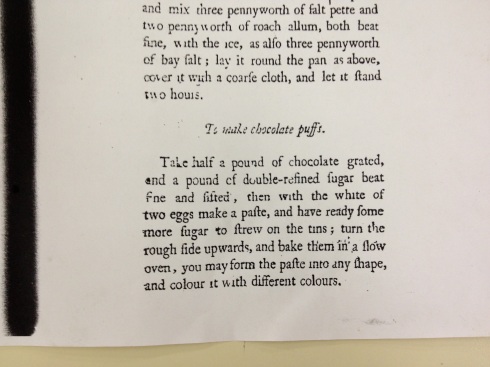
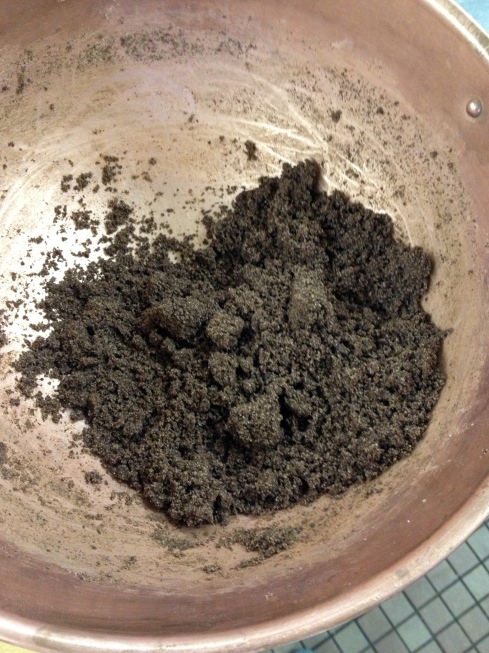
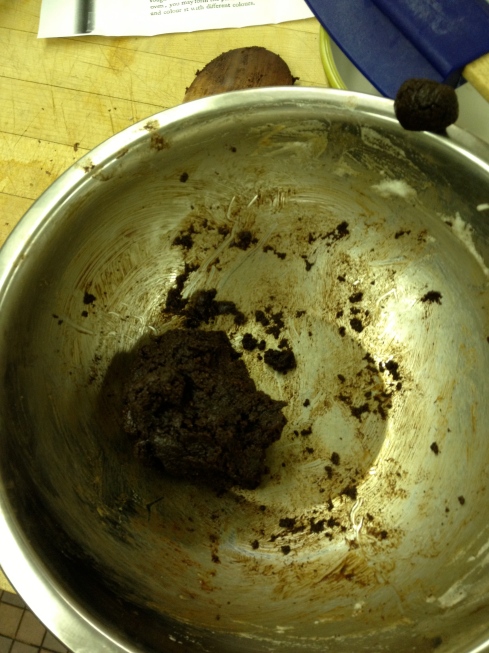
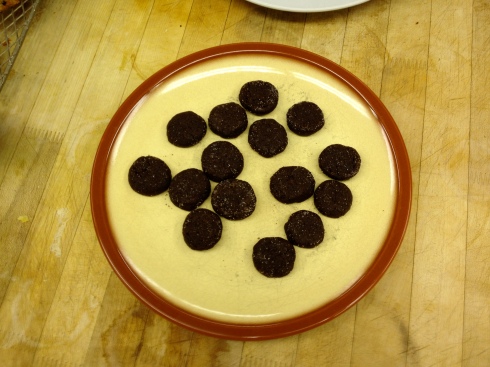
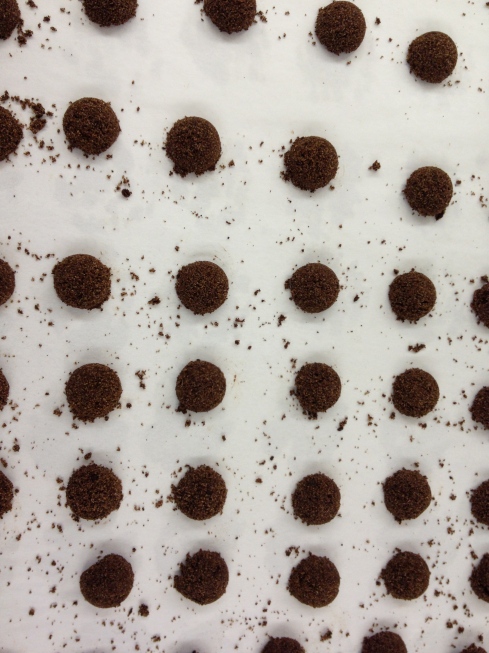
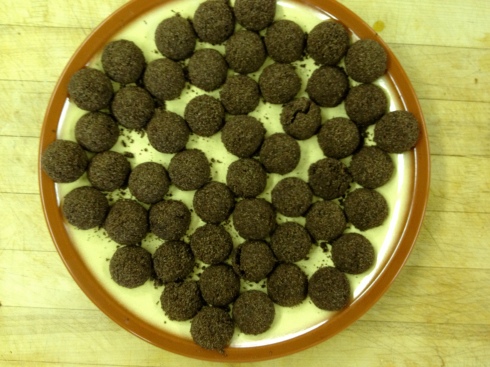
Leave a comment